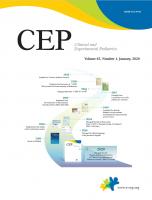Angioedema (AE) is defined as deep dermal/subcutaneous tissue swelling with localized increased permeability of the blood vessels mediated by mast cell mediators including histamine and bradykinin [1,2]. Distinct from major histamine-mediated AE, bradykinin-mediated AE is not associated with urticarial wheal; rather, it is caused by a hereditary deficiency/defect of C1-inhibitor (C1-INH) or acquired by drug exposure or other mechanisms [2]. Hereditary AE (HAE) is a rare autosomal dominant bradykinin-mediated AE, but a family history may not be present in up to 25% of patients (those with de novo mutation) [2,3]. Its incidence is reportedly 1:50,000–100,000 in Caucasians, much higher than that in Japanese, Chinese, and Koreans; the first nationwide survey identified a total of 65 patients by 2016 with an estimated prevalence was 1.3/1,000,000 [4]. Of them, 44 (67.7%) were female; 37 (58.7%) had a family history of HAE. Of the cohort, 90.8% had a C1-INH deficiency (HAE type I) and 9.2% had C1-INH dysfunction (HAE type II), but other mutations with normal C1-INH level and function are yet to be identified. Furthermore, the clinical manifestation and severity of HAE may vary among ethnicities, resulting in a milder severity, higher proportion of asymptomatic patients, and later age at onset in Asians than in Europeans [4]. Most patients experience their first attacks in childhood or adolescence, after which point the frequency of attacks increases; for example, in Germany, 51.2% of patients experienced their first HAE symptoms before 10 years of age, 37.8% in the second decade, and 12% after 20 years of age versus only 26.2% of patients in Korea [4,5]. An early symptom onset may predict a more severe subsequent disease course [5,6].
Our case has some interesting clinical points [7]. First, the patient’s initial presentation was a pruritic erythema marginatum-like rash, followed by fever, abdominal pain, and AE on the hands and feet the next day. Fortunately, we did not miss the patient’s medical history of recurrent arm swelling for one year and checked her complement level, which led to confirmation of the diagnosis without delay at 4 years of age. HAE does not accompany pruritis or urticarial wheal, but it shows erythema marginatum-like prodromal skin rashes in 60% of cases that can interfere with and delay the HAE diagnosis by years [8]. Second, the patient’s mother developed symptoms of HAE 5 years later during breast cancer chemotherapy. HAE can be fatal due to laryngeal or gastrointestinal involvement, so its early diagnosis and treatment are essential [2]. The reported mean delay to diagnosis after the initial presentation was 8–13 years, but this patient and her mother were diagnosed without delay. The World Allergy Organization/European Academy of Allergy and Clinical Immunology (WAO/EAACI) guidelines for HAE [2] recommend that all patients with suspected HAE undergo the assessment of serum levels of C4 and C1-INH proteins as well as C1-INH function. If any of the levels are abnormally low, the tests should be repeated to confirm the diagnosis of HAE. The WAO/EAACI guidelines also recommend that all family members, including grandparents, parents, siblings, children, and grandchildren of HAE-1/2 patients, be screened due to the possibility of autosomal dominant inheritance and delayed diagnosis leading to morbidity, since the first AE event can be fatal due to airway involvement. Therefore, when a patient has suspected HAE at 4 years of age, the test should be repeated for confirmation and family screenings should be performed immediately. All early testing performed for the offspring of HAE-1/2 patients should be repeated after 1 year of age; the measurement of C4 was not useful for diagnosing HAE-1/2 in children younger than 12 months since C4 levels are frequently low in healthy infants. However, genetic testing increases the diagnostic reliability in children and may be helpful [2].
Third, in our case, AE did not recur after the first admission, and the recurrent abdominal pain improved spontaneously after 6 years of age; her mother’s symptoms disappeared after the discontinuation of tamoxifen, suggesting mild severity despite the early age at onset [7]. However, HAE is known to worsen around puberty and persist throughout life with unpredictable severity [5]. This case should be followed closely according to the recommendation that all patients have an action plan, avoid possible triggers that may induce HAE attacks, and be taught to self-administer medications [2,6]. The treatment of HAE is divided into treatments for acute attacks; maintenance therapy (long-term prophylaxis); and preprocedural prophylaxis (short-term prophylaxis) for surgical trauma, dental surgery, and endoscopy. All patients must have sufficient medication for the on-demand treatment of 2 attacks and carry on-demand medication at all times [2,6]. C1-INH should be used to treat HAE attacks in children under the age of 12 years [6]. In Korea, C1-INH and bradykinin B2 receptor antagonist icatibant (≥2 years of age) are available, while the oral kallikrein inhibitor for long-term prophylaxis is currently in clinical trial [9].





 PDF Links
PDF Links PubReader
PubReader ePub Link
ePub Link PubMed
PubMed Download Citation
Download Citation


